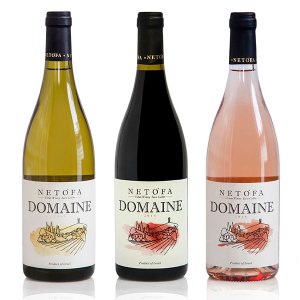No accounting for taste: Art and Wine
Wine provides a truly immersive experience, one that goes far beyond the wine itself. No less essential to the experience is the bottle and its label. In fact, when a good bottle of wine is placed on the table, a well-designed label quickly becomes the center of attention, transforming the wine drinking experience into something more reminiscent of art.
In 1924 Phillip de Rothschild permanently married art and wine by hiring the most respected artists of the time to design the label of the Chateau Mouton. Indeed, no consumer would dare to argue with the claim that a label designed by Picasso or Warhol contributes to the gourmet experience provided by a wine. In fact, this is the precise reason that all wine labels – from the very best of the best, to the less inspiring labels – put forth an artsy feeling that gives voice to a specific aspect of the winery.
As with all things related to design, there are trends that come and go when it comes to label design. Similar to fashion design, last year’s ‘in’ will always be less popular this year. In art however, there exists a timelessness that is immune to changing trends. Perhaps this is the reason many wineries, in Israel and abroad, tend to decorate their labels with artwork that will never go out of style.
How exactly is wine a type of art? Well, first of all a vintage wine is necessarily a one-off. Each year’s vintage is different from last year’s and from next year’s vintage. Moreover, there is no precise recipe for making wine, and one never knows exactly what the final result will taste, look and smell like. This process is similar to that of an artist’s, who begins each artwork in front of an empty canvas without knowing what the end result will look like.
One-off
A few years ago, Castel Winery decided to merge art and ‘At Risk Youth’. In 2012, the guys at Castel held a wine auction, with all proceeds donated to a local nonprofit focused on helping at risk youth.
The winery staff decided that as part of this endeavor, a select number of artists would design one-off labels for the rare Gran Vin bottles. These bottles were sold to collectors and wine enthusiasts at a gala event held in their honor. The Gran Vin’s original label was designed by the artist Aryeh Azan, who was a close friend of the winery owners, the Ben-Zaken family. Azan drew an illustration of the original Castel winery in Ramat Raziel, and of their new facility in Yad Shmona.
In this project, all the labels incorporated the winery’s branding in their design, however each label differed in the way the artist expressed his own unique style. You might call this whole project a sort of a unique art expo displayed on the bottles of the winery.
Childhood scenery
Jerusalem Winery recently released a limited edition of a new wine by Sam Soroka, who created the wine alongside the artist David Gershtein who handled the artistic side of the process. The end result had each of the five bottles in the edition decorated by one of David Gershtein’s well-known works of art. Gershtein’s studio is located in the Ella Valley (near Beit Shemesh), where he mostly paints the scenes of his childhood: nature, vineyards and grapes.
The designer chose the paintings for the wine label from a huge selection. In some cases, she decided to incorporate specific parts of a painting for the label. David Gershtein himself is quite proud of the connection between the wine labels and his art. He feels that his paintings add another dimension to the wines: art, color and brushstroke textures.
An art expo on bottles
The Rose wine is decorated by the painting “A Mediterranean Table’, the Guvertmeiner by the painting ‘The Sun’s Flowers’, the Marcellan proudly displays ‘The Tree’s Prayer’, the Muscat shows ‘Glass Tool’ while the Chardonnay is adorned with the painting ‘Summer in the Orchard’. Indeed, the connection is very strong. At the top of each of the five bottles is the winery’s logo, clearly separated from the center label, while the label itself gives the artwork center stage, which commands the attention of the viewer. At the bottom of the bottle one can find the winery’s technical specs on a black background to create contrast.
There’s something about the wine drinking experience that connects us to very specific moments from our lives. A specific moment that is stored away from the host of other memories that make up our lives is made even more memorable because of its art. Art on a limited-edition vintage bottle serves its purpose in conveying a message in the same way any other brand does. A bottle that proudly displays artwork on its label will always be seen in a much more prestigious light than a bottle with ‘simple’ labeling. Therefore it’s no surprise that for wine enthusiasts and many others, these bottles are considered to be collector’s items.

